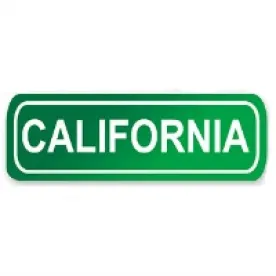Last week, just in time for the holidays, the California Supreme Court issued its (published) decision in Augustus v. ABM Security Services, Inc. (opinion available here). In Augustus, the Court held that California law does not permit employers to require employees to take on-duty or on-call rest breaks.
The Augustus decision will have significant impact for thousands of California employers who have employed on-duty or on-call rest breaks as part of their business operations, especially in the healthcare, security, hospitality, and retail sectors.
California’s Rest Break Requirements (In General)
Although not directly addressed in California’s Labor Code,[1] California’s Industrial Welfare Commission’s industry-specific Wage Orders require employers to authorize and permit their non-exempt employees to take a net 10 consecutive minute rest break for each four hour work period or major fraction thereof. Insofar as practicable, the rest breaks should be taken in the middle of each four work period.[2]
Background of Augustus
In Augustus, the plaintiffs worked as non-exempt security guards for defendant ABM Security Services, Inc. (“ABM”). The putative class worked at a variety of different locations, including residential, retail, office, and industrial sites throughout California. Guards’ principal duties were to provide an immediate response to emergency and/or life safety situations and to provide physical security for their assigned locations.
As part of their jobs, guards were required to keep their pagers and radio phones on – including during rest breaks – and to remain vigilant and responsive to calls when needs arose. According to ABM, urgent or time-sensitive needs which required guards to remain on-duty or on-call included a variety of circumstances, including where a building tenant wished to be escorted to the parking lot, a building manager had to be notified of a mechanical problem, or the occurrence of some kind of “emergency situation.”
Plaintiffs sued ABM, alleging the company failed to provide them compliant rest breaks. The trial court granted summary judgment for plaintiffs, and awarded the plaintiffs approximately $90 million, but the Court of Appeal reversed.
Issues Presented to the California Supreme Court
Augustus presented two issues to the California Supreme Court: (1) are employers required to permit non-exempt employees to take off-duty rest breaks; and (2) may employers require non-exempt employees to remain on-call during rest breaks.
The California Supreme Court’s Decision
The California Supreme Court began by addressing whether California law required employers to provide off-duty rest breaks. The Court noted that, unlike the section of the relevant Wage Order relating to meal periods, the section on rest breaks did not explicitly require that they be off-duty. However, the Court’s examination of the plain meaning of the word “rest,” as well as other language in the Wage Order and Labor Code, led it to conclude that rest breaks needed to be off-duty. In particular, the Court relied on the fact that Labor Code section 226.7 prohibits employers from requiring any employee to work during any meal or rest period. The Court also noted that the relevant Wage Order contained language to the effect that rest breaks needed to be counted as time worked. The Court reasoned that this language – counting rest breaks as work time – would be unnecessary if they were not intended to be off-duty. The Court also rejected ABM’s argument that an on-duty rest break was consistent with language in the Wage Orders permitting employers – in rare instances – to require employees to take on-duty meal periods. In the Court’s opinion, the absence of language authorizing on-duty rest breaks was telling. Accordingly, the Court held that rest breaks must be off-duty.
The Court next considered whether employers could satisfy their obligations to relieve employees from duties and employer control during rest breaks where the employers nonetheless required employees to remain on-call. ABM attempted to distinguish situations where an employer required an employee to continue working from a situation where an employer merely required an employee to remain available if a need arose. The Court was unpersuaded. The majority noted that, given the practical realities of a 10-minute break period, employees were already somewhat constrained in terms of what they could do. The Court found that the additional limitations on employees – from pagers, radios, and/or being vigilant and responsive – were “irreconcilable with employees’ retention of freedom to use rest periods for their own purposes.” Thus, the Court held that on-call rest breaks were not compliant.
Takeaways
The Augustus decision will have significant impact on employers who employ on-duty or on-call rest breaks due to staffing shortages and/or single-employee shifts. Employers who cannot relieve non-exempt employees of all duties during required rest breaks may need to pay rest break premiums if they cannot find a way to provide an alternative off-duty rest break. Employers who use on-duty or on-call rest breaks may wish to consult an employment lawyer to evaluate strategies to avoid liability going forward.
[1] While rest break requirements are not set forth in the Labor Code, Labor Code section 226.7 makes it unlawful for an employer to require an employee to perform work during any break period.
[2] The above Wage Order rest break rules apply to the vast majority of non-exempt employees. However, there are exceptions for employees employed in certain 24-hour residential care facilities as well as employees covered by the Wage Order applicable to the motion picture industry.




 />i
/>i

